-
 Bitcoin
Bitcoin $79,012.1761
-4.78% -
 Ethereum
Ethereum $1,570.4026
-12.09% -
 Tether USDt
Tether USDt $0.9994
-0.02% -
 XRP
XRP $1.9666
-7.46% -
 BNB
BNB $555.4328
-6.02% -
 USDC
USDC $0.9999
-0.01% -
 Solana
Solana $107.5201
-9.67% -
 Dogecoin
Dogecoin $0.1506
-10.27% -
 TRON
TRON $0.2315
-2.62% -
 Cardano
Cardano $0.5814
-10.27% -
 UNUS SED LEO
UNUS SED LEO $8.8602
-2.17% -
 Chainlink
Chainlink $11.3795
-10.04% -
 Toncoin
Toncoin $3.0063
-7.92% -
 Stellar
Stellar $0.2370
-5.38% -
 Avalanche
Avalanche $16.1395
-9.48% -
 Shiba Inu
Shiba Inu $0.0...01134
-7.55% -
 Sui
Sui $1.9135
-13.06% -
 Hedera
Hedera $0.1425
-11.59% -
 Polkadot
Polkadot $3.7145
-5.76% -
 MANTRA
MANTRA $5.9824
-4.31% -
 Bitcoin Cash
Bitcoin Cash $272.1059
-9.40% -
 Litecoin
Litecoin $71.2279
-13.11% -
 Dai
Dai $1.0000
-0.02% -
 Ethena USDe
Ethena USDe $0.9987
-0.05% -
 Bitget Token
Bitget Token $4.1866
-5.67% -
 Pi
Pi $0.5915
4.23% -
 Monero
Monero $200.3568
-5.71% -
 Hyperliquid
Hyperliquid $10.5427
-10.74% -
 Uniswap
Uniswap $5.1188
-11.73% -
 OKB
OKB $50.3711
-2.37%
What are the decentralized storage solutions in blockchain and how do they work?
Blockchain and distributed ledger technologies underpin decentralized storage, distributing data across a network of nodes for censorship resistance and enhanced security via cryptography, though scalability and cost remain challenges.
Mar 15, 2025 at 05:50 am
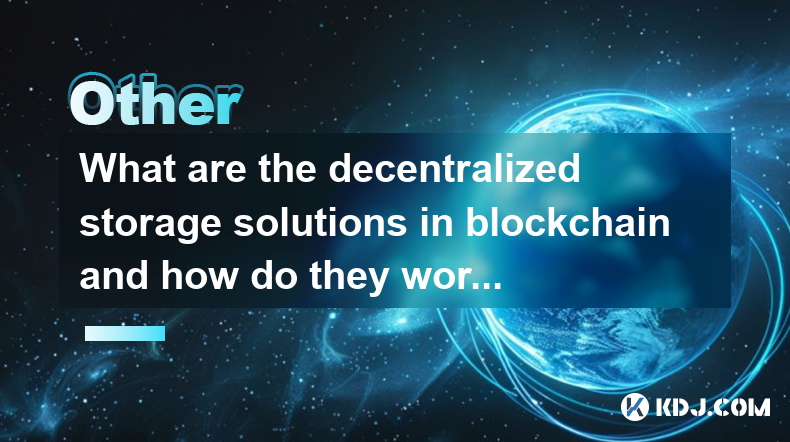
What are the Decentralized Storage Solutions in Blockchain and How Do They Work?
Key Points:
- Decentralized storage's core principle: Eliminating single points of failure and censorship by distributing data across a network of independent nodes. This contrasts sharply with centralized cloud storage providers like Amazon S3 or Google Cloud Storage.
- Key technologies enabling decentralized storage: Blockchain technology provides the immutable record of data location and integrity, while distributed ledger technologies (DLTs) facilitate secure and transparent data management. Cryptography ensures data confidentiality and authenticity.
- Diverse approaches to decentralized storage: Different projects employ various mechanisms, including IPFS (InterPlanetary File System), Arweave, Sia, Filecoin, and Storj, each with its own strengths and weaknesses regarding cost, speed, and data accessibility.
- Challenges and considerations: Decentralized storage faces ongoing hurdles in terms of scalability, cost-effectiveness compared to centralized solutions, and user experience complexities.
Decentralized Storage Solutions in Blockchain: A Deep Dive
Decentralized storage, a crucial component of the broader Web3 ecosystem, aims to revolutionize how data is stored and accessed. Unlike traditional centralized storage systems controlled by a single entity, decentralized storage distributes data across a vast network of independent nodes. This distributed architecture offers several compelling advantages, primarily resilience against censorship, single points of failure, and data breaches. Let's explore how these solutions work in detail.
- 1. The Foundation: Blockchain and Distributed Ledger Technology (DLT):
The backbone of decentralized storage lies in the synergy between blockchain technology and distributed ledger technologies. Blockchain's immutability guarantees the integrity of data location and access records. Every transaction involving data storage or retrieval is recorded on the blockchain, creating an auditable and transparent trail. This immutability is crucial because it prevents malicious actors from altering or deleting data without detection. Furthermore, DLTs, which include blockchains but also encompass other distributed database models, facilitate secure and transparent data management. They enable multiple parties to share and update data concurrently while maintaining consistency and preventing unauthorized modifications. The consensus mechanisms employed by these technologies (Proof-of-Work, Proof-of-Stake, etc.) ensure the integrity and availability of the network, mitigating the risk of single points of failure. The combination of blockchain's immutability and DLT's distributed nature forms a robust foundation for secure and resilient decentralized storage. The cryptographic hashing algorithms used within these systems further ensure data integrity by creating unique fingerprints for each data segment, enabling immediate detection of any tampering. This sophisticated combination provides a level of security and trust that traditional centralized systems struggle to match. The decentralized nature means no single entity controls the data, significantly reducing the risk of censorship or data loss due to a single point of failure. Consider a scenario where a traditional cloud storage provider suffers a server outage; all stored data becomes temporarily or potentially permanently inaccessible. In a decentralized system, data remains accessible as long as a sufficient number of nodes remain online. This inherent redundancy is a key strength of decentralized storage.
- 2. Cryptography's Crucial Role:
Cryptography plays a pivotal role in ensuring the security and privacy of data stored in decentralized systems. Several cryptographic techniques are employed to achieve this:
* **Encryption:** Data is encrypted before being stored, ensuring that only authorized users with the correct decryption keys can access it. This protects data from unauthorized access, even if a node is compromised. Different encryption algorithms offer varying levels of security and performance trade-offs. The choice of algorithm often depends on the specific application and security requirements.
* **Hashing:** Data is hashed to create a unique fingerprint. This fingerprint is used to verify the integrity of the data. If the data is altered, the hash will change, immediately indicating tampering. This is crucial for ensuring data authenticity and preventing malicious alterations. The use of cryptographic hashing functions, such as SHA-256 or SHA-3, provides a strong guarantee against data manipulation.
* **Digital Signatures:** Digital signatures are used to verify the authenticity of data and the identity of users. They allow users to prove that they are the legitimate owners of the data and that the data hasn't been tampered with. This ensures non-repudiation, meaning users cannot deny having signed or accessed specific data. These signatures are essential for trust and accountability within the decentralized ecosystem.
* **Zero-Knowledge Proofs:** In certain scenarios, zero-knowledge proofs allow users to prove they have access to data without revealing the data itself. This is particularly useful in applications where privacy is paramount, such as identity verification or confidential data sharing. These advanced cryptographic techniques further enhance the security and privacy offered by decentralized storage.
- 3. File Addressing and Retrieval Mechanisms:
Decentralized storage systems employ sophisticated mechanisms for addressing and retrieving files. The use of content addressing, where files are identified by their cryptographic hash rather than a location, is central to this process. This ensures that even if a file is moved or replicated across different nodes, it can still be reliably located and retrieved using its unique hash. This contrasts sharply with traditional centralized systems, where files are located by their physical path or name, making them vulnerable to changes in file structure or server location.
* **IPFS (InterPlanetary File System):** IPFS uses content addressing and a distributed hash table (DHT) to locate and retrieve files. It creates a decentralized web, allowing users to access files regardless of their location or the availability of individual nodes.
* **Other Mechanisms:** Other decentralized storage systems may employ alternative mechanisms, such as distributed ledgers or specialized indexing services, to manage file addressing and retrieval. The specific mechanism used depends on the architecture and design of the system. The choice of mechanism impacts factors such as retrieval speed, scalability, and complexity.
- 4. Incentive Mechanisms and Tokenomics:
Many decentralized storage systems use tokenized incentive mechanisms to motivate users to participate in the network and provide storage capacity. These tokens incentivize users to store data, ensuring the availability and reliability of the network. The economic model underlying these systems is often designed to balance the interests of data providers (storage providers), data consumers (users), and the network itself. The tokenomics play a critical role in determining the cost of storage, the availability of resources, and the overall health of the decentralized storage network. The design of these incentive mechanisms is crucial for ensuring the long-term sustainability and resilience of the network. A well-designed tokenomics model fosters a healthy ecosystem by aligning the incentives of all stakeholders.
- 5. Specific Decentralized Storage Projects:
Several projects are actively developing and implementing decentralized storage solutions. Each project has its own unique approach, strengths, and weaknesses:
* **Filecoin:** Filecoin utilizes a proof-of-replication consensus mechanism to incentivize storage providers. Users pay for storage in Filecoin tokens.
* **Sia:** Sia uses a blockchain-based marketplace for storage. Users can rent storage from independent providers, paying in Siacoin.
* **Storj:** Storj employs a decentralized network of storage nodes to securely store and retrieve data. Users pay for storage in Storj tokens.
* **Arweave:** Arweave aims to provide permanent storage through its unique "Proof-of-Access" consensus mechanism. Users pay for storage in AR tokens.
Each project addresses the challenges of decentralized storage differently, resulting in varying levels of performance, security, and cost-effectiveness. The selection of a specific project depends on the user's specific needs and priorities.
FAQs:
Q: What is the difference between decentralized storage and cloud storage?
A: Decentralized storage distributes data across a network of independent nodes, eliminating single points of failure and censorship. Cloud storage, on the other hand, relies on centralized servers controlled by a single entity, making it vulnerable to outages, censorship, and data breaches.
Q: Is decentralized storage more secure than cloud storage?
A: Decentralized storage offers a higher level of security due to its distributed nature and cryptographic techniques. However, it's not entirely immune to attacks. The security of any system depends on its implementation and the strength of its cryptographic algorithms.
Q: Is decentralized storage more expensive than cloud storage?
A: Currently, decentralized storage is generally more expensive than cloud storage due to the overhead of maintaining a distributed network. However, prices are fluctuating and may become more competitive in the future as technology improves and adoption increases.
Q: How can I access my data stored in a decentralized storage system?
A: Accessing data depends on the specific system used. Most systems provide APIs or client software for retrieving data. You will typically need a unique identifier (e.g., a cryptographic hash) to locate and retrieve your data.
Q: What are the limitations of decentralized storage?
A: Current limitations include scalability challenges, higher costs compared to centralized solutions, and potentially slower access speeds. User experience can also be more complex than with centralized cloud storage. Ongoing development is addressing these challenges.
Q: What is the future of decentralized storage?
A: The future of decentralized storage is promising. As technology advances and adoption increases, it is expected to become more scalable, cost-effective, and user-friendly, potentially disrupting the traditional cloud storage market. The ongoing development of improved consensus mechanisms, cryptographic techniques, and incentive models will play a crucial role in shaping its future.
Disclaimer:info@kdj.com
The information provided is not trading advice. kdj.com does not assume any responsibility for any investments made based on the information provided in this article. Cryptocurrencies are highly volatile and it is highly recommended that you invest with caution after thorough research!
If you believe that the content used on this website infringes your copyright, please contact us immediately (info@kdj.com) and we will delete it promptly.
- Tether to Acquire Majority Stake in Adecoagro; Bioceres Allegedly Next
- 2025-04-07 05:15:13
- Renowned Crypto Investor Has Outlined a Brave XRP Price Prediction
- 2025-04-07 05:15:13
- Toncoin (TON) Price Regains Traction and Might Soon Surge Further Toward the $4.80 Resistance Zone
- 2025-04-07 05:10:12
- The cryptocurrency mining landscape in 2025 is flourishing, with cloud mining shining as a highly accessible
- 2025-04-07 05:10:12
- Solaxy (SOLX) Raises $28M in Presale, Aiming to Be the Arbitrum of Solana
- 2025-04-07 05:05:13
- BingX Launches Perpetual Trading on TradingView
- 2025-04-07 05:05:13
Related knowledge
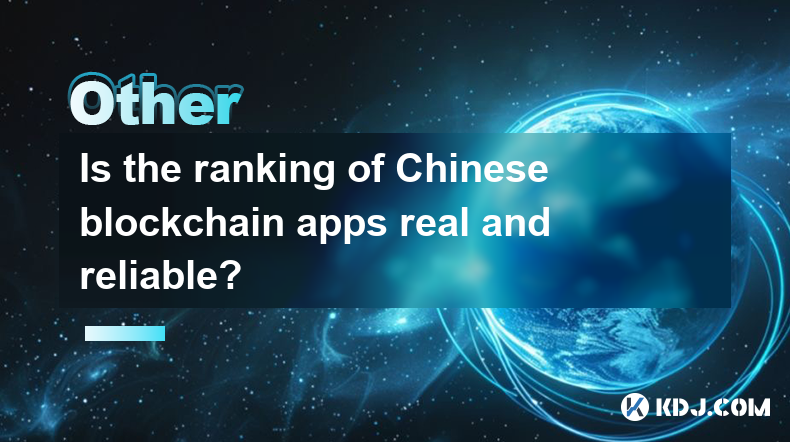
Is the ranking of Chinese blockchain apps real and reliable?
Apr 04,2025 at 09:01pm
The ranking of Chinese blockchain apps has become a topic of interest for many in the cryptocurrency community, as it provides insights into the popularity and adoption of blockchain technology within China. However, the reliability and authenticity of these rankings are often questioned. This article aims to delve into the factors that influence these ...
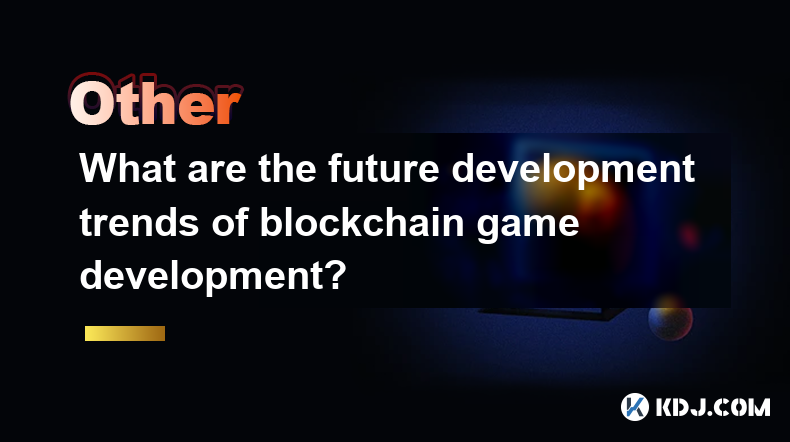
What are the future development trends of blockchain game development?
Apr 03,2025 at 05:00am
Blockchain technology has revolutionized various industries, and gaming is no exception. As we look to the future, several trends are set to shape the development of blockchain games. These trends not only promise to enhance the gaming experience but also to integrate blockchain technology more seamlessly into the gaming ecosystem. Let's explore these t...
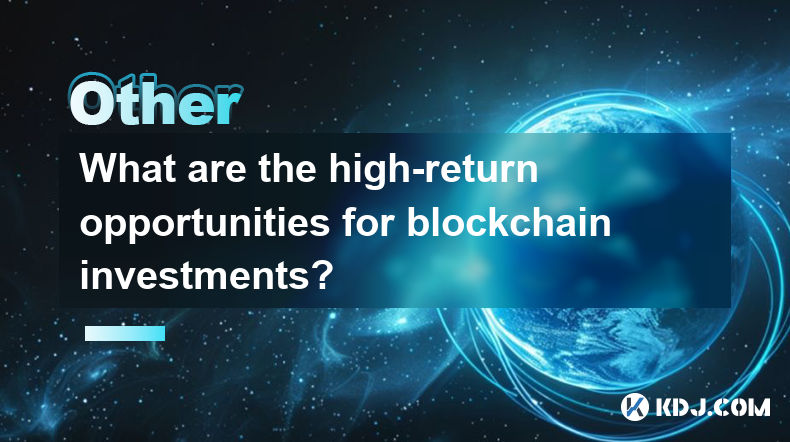
What are the high-return opportunities for blockchain investments?
Apr 05,2025 at 02:35pm
Blockchain technology has revolutionized the financial world, offering numerous high-return investment opportunities. These opportunities span various sectors within the cryptocurrency ecosystem, including cryptocurrencies, decentralized finance (DeFi), non-fungible tokens (NFTs), and blockchain startups. Each of these areas presents unique risks and re...
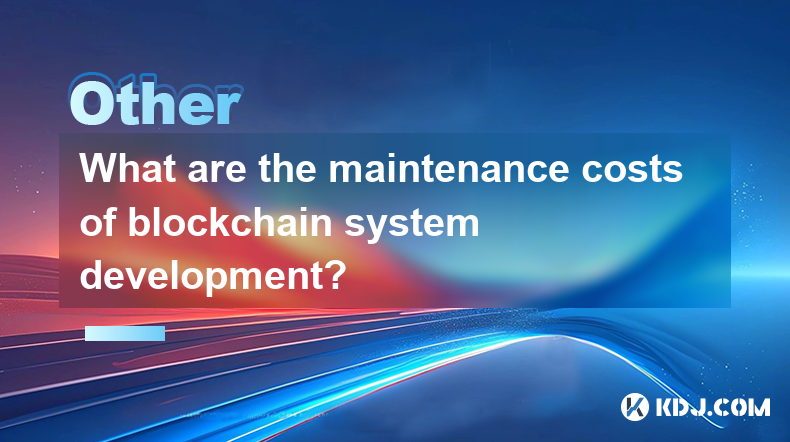
What are the maintenance costs of blockchain system development?
Apr 03,2025 at 06:07pm
The maintenance costs of blockchain system development are multifaceted and depend on various factors. These costs can include technical maintenance, security updates, infrastructure expenses, and personnel costs. Understanding these elements is crucial for anyone planning to develop or maintain a blockchain system. Technical MaintenanceTechnical mainte...
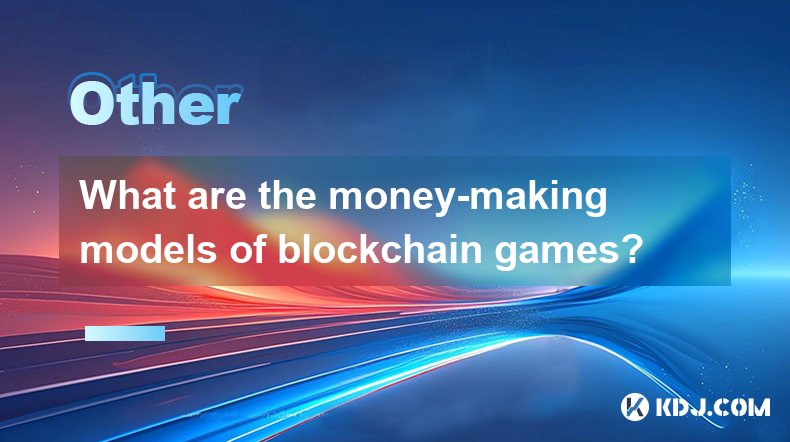
What are the money-making models of blockchain games?
Apr 04,2025 at 02:00pm
Blockchain games have emerged as a revolutionary way for players to earn real money while enjoying their favorite pastime. These games leverage the power of blockchain technology to create unique money-making models that benefit both the players and the developers. In this article, we will explore the various money-making models of blockchain games and ...
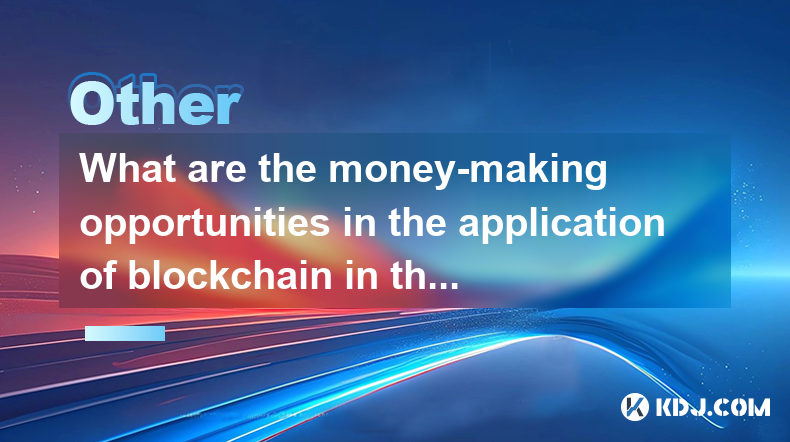
What are the money-making opportunities in the application of blockchain in the field of Internet of Things?
Apr 05,2025 at 10:35pm
The integration of blockchain technology with the Internet of Things (IoT) presents numerous money-making opportunities. Blockchain, with its decentralized and secure nature, can revolutionize how IoT devices interact, manage data, and conduct transactions. This article will explore various avenues where entrepreneurs, developers, and investors can capi...

Is the ranking of Chinese blockchain apps real and reliable?
Apr 04,2025 at 09:01pm
The ranking of Chinese blockchain apps has become a topic of interest for many in the cryptocurrency community, as it provides insights into the popularity and adoption of blockchain technology within China. However, the reliability and authenticity of these rankings are often questioned. This article aims to delve into the factors that influence these ...

What are the future development trends of blockchain game development?
Apr 03,2025 at 05:00am
Blockchain technology has revolutionized various industries, and gaming is no exception. As we look to the future, several trends are set to shape the development of blockchain games. These trends not only promise to enhance the gaming experience but also to integrate blockchain technology more seamlessly into the gaming ecosystem. Let's explore these t...

What are the high-return opportunities for blockchain investments?
Apr 05,2025 at 02:35pm
Blockchain technology has revolutionized the financial world, offering numerous high-return investment opportunities. These opportunities span various sectors within the cryptocurrency ecosystem, including cryptocurrencies, decentralized finance (DeFi), non-fungible tokens (NFTs), and blockchain startups. Each of these areas presents unique risks and re...

What are the maintenance costs of blockchain system development?
Apr 03,2025 at 06:07pm
The maintenance costs of blockchain system development are multifaceted and depend on various factors. These costs can include technical maintenance, security updates, infrastructure expenses, and personnel costs. Understanding these elements is crucial for anyone planning to develop or maintain a blockchain system. Technical MaintenanceTechnical mainte...

What are the money-making models of blockchain games?
Apr 04,2025 at 02:00pm
Blockchain games have emerged as a revolutionary way for players to earn real money while enjoying their favorite pastime. These games leverage the power of blockchain technology to create unique money-making models that benefit both the players and the developers. In this article, we will explore the various money-making models of blockchain games and ...

What are the money-making opportunities in the application of blockchain in the field of Internet of Things?
Apr 05,2025 at 10:35pm
The integration of blockchain technology with the Internet of Things (IoT) presents numerous money-making opportunities. Blockchain, with its decentralized and secure nature, can revolutionize how IoT devices interact, manage data, and conduct transactions. This article will explore various avenues where entrepreneurs, developers, and investors can capi...
See all articles





















































































